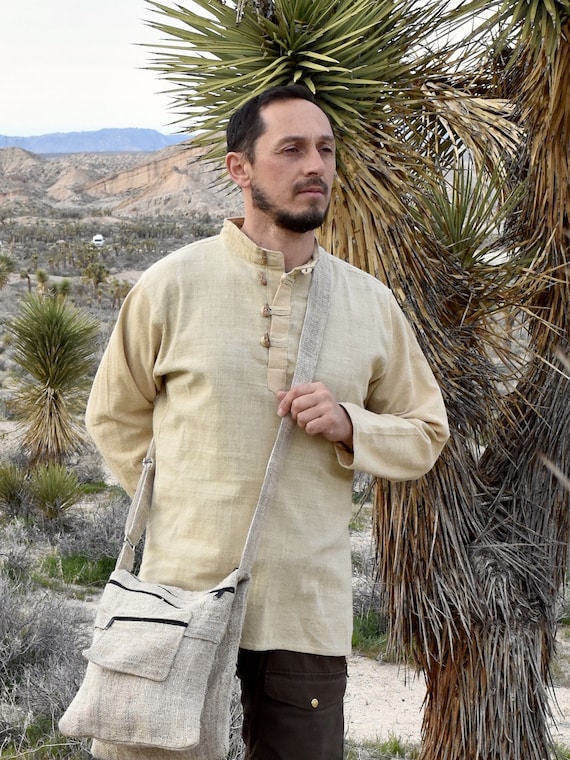New Reasons For Picking Hemp Clothing
Wiki Article
What Are The Benefits Of Low Impact Hemp Fibre Clothing For The Environment?
Low impact fiber hemp clothing offers several environmental advantages as compared to clothing made from other materials, particularly synthetic fibers and conventional cotton. Hemp clothing is eco-friendly. It is a quick-growing plant that requires lesser water, pesticides, or herbicides than other crops. Hemp thrives in all climates and can adapt to different soil types, which reduces the need for chemicals used in agriculture.
Hemp is a plant that uses less water than cotton. Cotton, on the other hand is known for its water-intensive nature. Hemp clothing is more water-efficient due to this.
Hemp can grow without herbicides or pesticides. In many instances this helps reduce the impact on the environment of chemical farming.
Hemp cultivating can improve soil quality because of its deep-rooted roots system that helps prevent soil compaction and erosion. The soil is in a better condition to allow future crops to flourish.
Biodegradability - Hemp fibers degrade and biodegrade naturally over time. This reduces the environmental impact of textile waste. Synthetic fibers, such as polyester, can take up to a few hundred years before decomposing.
Low Carbon Footprint - The hemp fibers have a smaller carbon footprint than synthetic materials. Hemp is also a carbon-sink, as it can absorb CO2 from the atmosphere as it is expanding.
Hemp clothing has earned a reputation for durability and long-lasting wear. Hemp garments of good quality can last for years. They can reduce the requirement for replacements and can also reduce consumption.
Hemp plants are naturally pest resistance that reduces the need for chemical pest control.
Hemp is a versatile fabric that can be used to make clothing, bags or accessories.
Regenerative agriculture: Some sustainable farming methods incorporate hemp into systems of regenerative agriculture, which aim at restoring and improving ecosystems while producing plants. This has a positive effect on the ecosystem.
The dyeing process, transport as well as consumer behavior all contribute to the sustainability of the entire process. Like in every industry there are differences in the production practices and the standards. So, to maximize environmental benefits, it's advisable to select hemp clothing made from organic and sustainable sources. Take a look at the best hemp clothes for more recommendations including hemp clothing womens, american made hemp clothing, hemp boxer shorts, 100 hemp clothing, hemp sweatshirt, hemp jeans mens, hemp and cotton fabric, hemp bathing suit, t shirt hemp, hemp shirts mens and more.

How Do Hemp Fibers Help Improve Carbon Sequestration (Carbon Sequestration) Sustainability, Sustainability As Well As Crop Rotation (Crop Rotation)?
Carbon Sequestration Hemp fibers have many benefits for the environment, including sustainability, crop rotation, as well as carbon sequestration.
Hemp grows rapidly and matures within 70 to 120 days dependent on the variety and conditions of growth. Photosynthesis is the process by which hemp plants absorb the atmospheric CO2 during rapid growth. The carbon absorption process can contribute to carbon sequestration which reduces CO2 levels in atmosphere.
Hemp's high biomass production is well known. The plant's tall and dense foliage produces a significant amount of organic material. If this biomass is added in the soil or utilized in various ways, it can contribute to the buildup of organic carbon within the soil, further securing carbon.
Sustainability:
Hemp requires less synthetic pesticides, herbicides and herbicides than many other crops such as cotton. The hemp's natural resistance to numerous diseases, pests and weeds minimizes the need of chemical treatments. The organic hemp industry in particular emphasizes sustainability through the avoidance of synthetic chemicals.
Hemp is a great water-efficient crop in comparison to traditional cotton. This helps hemp to be more durable in areas that have less water resources.
The hemp's deep root system enhances the health of soil. Its roots reduce soil runoff and also stabilize the soil's structure, thus preventing soil erosion. Hemp cultivation also improves soil fertility by increasing soil microbial activity.
Hemp is a great crop to incorporate into rotational systems. Crop rotation is the method of switching between various crops in a single field. This method can help break cycles of disease and pests, reduce soil depletion, and improve the soil's structure. Hemp's importance in crop rotation is crucial to the sustainable farming.
Crop Rotation
Hemp crops can be rotated with other crops like legumes, grains, and even vegetables. This diversification will help maintain the soil's health. It also decreases the threat of diseases and pests that are specific to crops, and help promote a an appropriate nutrition cycle.
Hemp’s deep roots penetrate and aerate soil, reducing compacting and increasing water infiltration. Improved soil structure is an advantage for crops that follow after hemp.
Summary- Hemp fibers are beneficial to soil quality, are compatible with crop rotation, as well as enhancing the sequestration of carbon as well as sustainability. They accomplish this by the rapid growth of biomass, minimal chemical use, water efficiency and their compatibility with crop rotation methods. These characteristics make hemp cultivation an ecological and sustainable agriculture practice. Furthermore, the hemp fibers that result are an eco-friendly choice for textiles and other uses. Read the top additional reading for hemp clothing for blog tips including patagonia iron forge jacket, 100 hemp shirt, hemp trousers, hemp work pants, patagonia volley shorts, hemp polo shirts, afends jesse dress, nomad hemp wear, hemp jacket, hemp pants womens and more.

What Are The Advantages Of Wearing Bamboo Clothing For Environmental And Comfort.
Bamboo clothing can be ecologically friendly and comfortable.
The softness of bamboo fabric is well appreciated for its incredible suppleness. It has a silky, smooth texture that feels soft against the skin. Bamboo clothing is well-known because of its luxurious softness making it a great option for activewear, loungewear and intimate clothing.
Breathability - Bamboo fibers can be naturally moisture-wicking and breathable. Air can circulate through the micro-gaps which keep you cool during hot temperatures. The moisture-wicking properties assist to remove sweat from the skin and decrease the sensation of dampness.
Bamboo clothing has excellent properties to regulate temperature. Bamboo clothing keeps you warm in cooler temperatures by trapping warmth near your body. It can also help you to stay cool during hot weather because it allows excessive heat and moisture to escape. Bamboo clothing is suitable for wear all the time because it can adapt to different temperatures.
Hypoallergenic Bamboo is hypoallergenic due to nature and gentle on sensitive skin. Bamboo fabric is less likely than other materials to cause allergic reactions or irritations, making it a great choice for people with allergic skin or sensitive skin.
Bamboo fibers are naturally antimicrobial, and can inhibit the growth of the bacteria which cause smell. This can help maintain the freshness of bamboo clothing even in physical activity.
Environment-
Sustainability- bamboo is a source of renewable energy that is environmentally sustainable. Bamboo is one of the fastest-growing plants on the planet. It is able to grow with only a little water and doesn't require any pesticides. Bamboo can be harvested and not kill the plant, as it is able to regenerate from its root system.
Bamboo is water-efficient and has a low consumption. Bamboo can thrive with minimal irrigation. The rainwater supply is usually sufficient for it to flourish.
Biodegradability. Bamboo clothing is biodegradable. They naturally break down with time. This feature reduces waste that is not biodegradable textiles that end up in landfills.
Carbon Sequestration. Bamboo can be utilized to store CO2 during its rapid expansion. Bamboo can be used as a carbon sink to assist in the fight against climate change.
Chemical Reduction- The production of bamboo fabric typically involves less chemical treatment and processing procedures compared to other textiles, which reduces the environmental impact of the production of textiles.
Closed Loop Production Some bamboo fabrics are made with closed loop systems which recycle and reuse chemicals and water, minimising the amount of waste.
It is important to remember that the impact on the environment of bamboo clothing may differ depending on the specific manufacturing process employed and whether the bamboo used for manufacturing is harvested from sustainable and ethically managed bamboo forests. The best bamboo clothing for consumers is clothes that are made using eco-friendly ethical practices in order to reap the highest environmental benefits. See the most popular look what I found on bamboo clothes for more info including men bamboo boxer shorts, bamboo fabric clothing, faceplant pajamas, ladies bamboo pants, boody clothing, short sleeve bamboo pajamas, bamboo clothing for women, bamboo hoodie women's, bamboo yoga leggings, bamboo exercise clothing and more.
